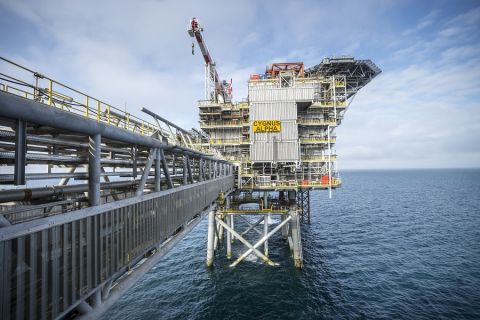The speculation was fun while it lasted. Newfield Exploration Co., along with partners ExxonMobil, BP, Petrobras, Dominion Exploration & Production Inc. and BHP Billiton Petroleum, was sitting on the details of the Blackbeard West #1, one of the deepest wells attempted in the
Alas, it was not to be.
In August Newfield announced that it had ceased drilling on the well due to higher-than-expected pressures. The well reached 30,067 ft (9,170 m) and encountered a thin gas-bearing sand. Newfield Chairman, President and Chief Executive Officer David A. Trice chalked up his company’s US $25 million investment as a learning experience.
“Although disappointed that we were unable to test our primary objectives, we have learned a great deal about drilling ultradeep wells,” Trice said. “This has been a challenging well to test a true frontier play, but Newfield is sufficiently encouraged to continue investing in this play. We intend to use the information gathered from this well to investigate if a well can be designed which will allow us to safely test this prospect in the future.”
That future is likely at least 2 years away since the leased blocks, in the South Timbalier and Ship Shoal areas, are past their primary terms. Newfield is working on plans to retain the leases, but with no production and no proved reserves, this could be a challenge. The company also is uncertain as to whether the prospect can be safely tested.
First of all, I think kudos are in order for the partners on this prospect. In an industry where risk aversion has been elevated to an art form, these folks put their money and equipment on the line to chase a play that everyone knew would be difficult at best to economically exploit. The play is technologically challenging from start to finish:
- Imaging the deep structures requires incredibly long offsets, which are hard to obtain in an area so crowded with existing infrastructure;
- Very few rigs are capable of drilling to these depths due to the amount of casing required on board;
- Very few downhole tools are tough enough to withstand the high pressures and temperatures found at these depths;
- Completion and production tools suffer the same issues; and
- Existing surface facilities are not likely to meet the specifications required to produce large quantities of high-pressure, high-temperature gas.
But the promise of huge untapped gas reserves was enough to put the play on everyone’s radar screen. The US Minerals Management Service, with encouragement from geophysical contractors, enacted financial incentives for ultradeep shelf drilling. Several operators that had abandoned the Shelf in favor of deeper waters came back to try their hand at this new, difficult type of drilling. When targets at 18,000 ft to 20,000 ft (5,490 m to 6,100 m) fell short of expectations, operators eyed ever-deeper targets.
Blackbeard was not the only well being drilled in this play, and it can be hoped that others will find more commercial amounts of hydrocarbons.
Might some operators that have held on to their Shelf acreage in anticipation of the Blackbeard results be tired of waiting? Ironically, the most recent
It will be interesting to watch this scenario continue to unfold. The US Senate recently passed a bill allowing more acreage to be opened to drilling in the
With unexplored offshore acreage on the horizon, maybe operators can indulge in a little fresh cherry-picking and leave the Blackbeards for a later date.
Recommended Reading
Hess: Pre-emption Provision Doesn't Apply to Buyout Deal With Chevron
2024-02-27 - Hess Corp. said on Feb. 27 that a pre-emption provision does not apply to its proposed $53-billion buyout by Chevron Corp. and it remains "fully committed" to the deal.
EQT, Equitrans Midstream to Combine in $5.5B Deal: Reports
2024-03-11 - EQT Corp.'s deal would reunite the natural gas E&P with Equitrans Midstream after the two companies separated in 2018.
Ithaca Energy to Buy Eni's UK Assets in $938MM North Sea Deal
2024-04-23 - Eni, one of Italy's biggest energy companies, will transfer its U.K. business in exchange for 38.5% of Ithaca's share capital, while the existing Ithaca Energy shareholders will own the remaining 61.5% of the combined group.
Eni, Vår Energi Wrap Up Acquisition of Neptune Energy Assets
2024-01-31 - Neptune retains its German operations, Vår takes over the Norwegian portfolio and Eni scoops up the rest of the assets under the $4.9 billion deal.
NOG Closes Utica Shale, Delaware Basin Acquisitions
2024-02-05 - Northern Oil and Gas’ Utica deal marks the entry of the non-op E&P in the shale play while it’s Delaware Basin acquisition extends its footprint in the Permian.


